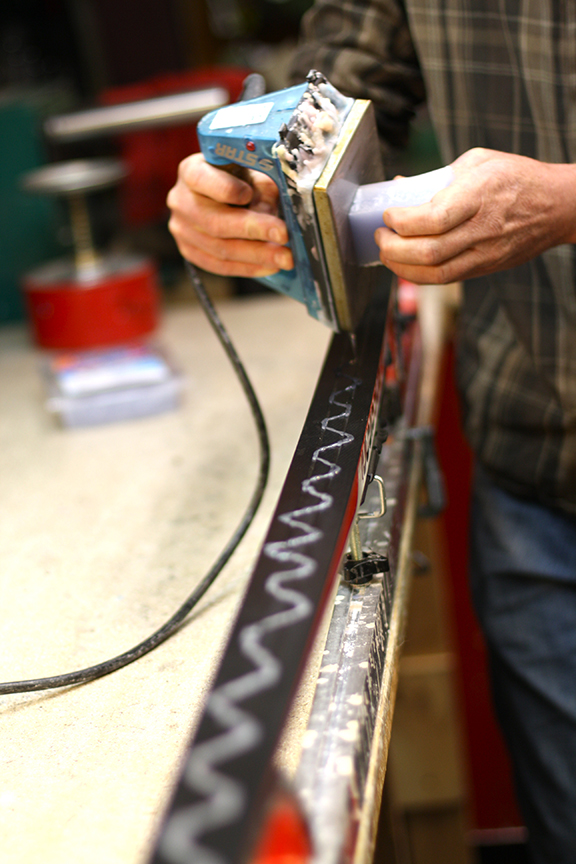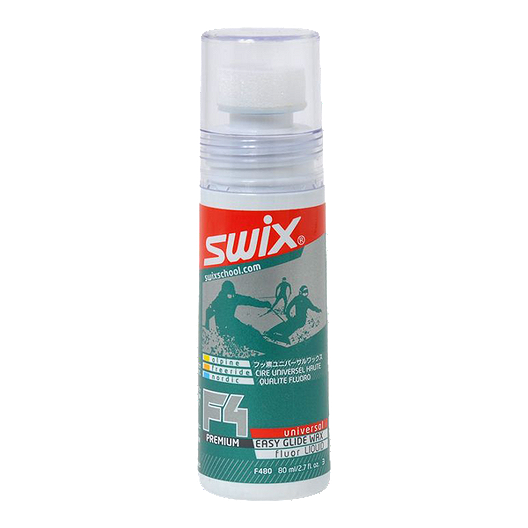Congrats, you just bought waxless classic skis! But wait. Yes, we need to talk about waxing.
Traditionally, classic skis needed to have two types of wax applied – grip wax and glide wax. Grip wax is applied to a pocket underneath the foot (the size of which is dependent on the skier). When the skier puts their weight on their foot, the wax grips the snow and the skier can push off the ski and glide on the other foot. You need to apply the correct temperature of grip wax for the snow temperature otherwise you will not get good grip. There are a wide array of temperatures that are colour-coded (red and purple are warmer waxes and blue and green are colder waxes – and there are a bunch of variations within). Hardwood and Highlands conditions page will tell you what they think the “wax of the day” is. There could be more than one as conditions change through the day.

The other part of the equation – glide wax – is applied above and below the grip wax zone (the “tips and tails” of the ski). This wax helps you to glide faster. There are different types of glide wax. The more traditional one comes in hard blocks of wax that are melted onto the ski, ironed in, and then the excess is scraped off. Racer will use this method as it is considered the most effective. Like grip wax, racers will glide wax every time according to the conditions of the day. Glide wax also comes in a variety of temperatures from warm to cold to match the snow temperature.
However, we are not racers and we don’t need to make it so complicated! Plus, we don’t all have the facilities to “hot wax”. Read on fellow recreational skiers for some glide wax guidance.
If you have waxless skis, you do not need grip wax. You achieve grip on the snow with a scale pattern etched in the base of the skis or, a more recent innovation, skins (a strip of mohair/nylon that is applied to the grip zone). This is where the term ‘waxless’ comes from – because there is no grip wax used.
BUT, you still should use glide wax to achieve a good glide.
You can hot wax your skis yourself if you have the right space and want to invest in all wax tools (or you can use the wax hut at the resort and waste…ahem, spend…ski time waxing). Then you can fine tune your skis to the conditions of the day. Or, if the resorts offer waxing services you can ask them to do it (but then you won’t have your skis for a while). Also remember that whatever wax they put on will be good for the conditions of that day – and that may not work the next time you go out.

The other option is liquid glide waxes. These come in a broad temperature ranges (so you won’t have to own so many bottles). You apply these every time you go out to ski. It’s very easy – you dab the liquid on the ski and spread it around. Then let it dry. Then buff it in with a nylon brush. And off you go. Liquid waxes are very good these days. Swix and Vauhti are the most common glide waxes.
I will often get my skis hot waxed at Highlands a couple times/season (to help keep my bases healthy), but I use liquid glide wax every time I go out.
Waxless skis have taken much of the waxing mystery out of skiing. Is it a blue day? Violet? Red? I don’t know! If you don’t want to deal with grip wax in the highly changeable conditions we find ourselves in Southern Ontario (and really, who does?), waxless skis are a great option. But use glide wax on the tips and tails and you might find yourself gliding along a bit faster.
Updated 2023

